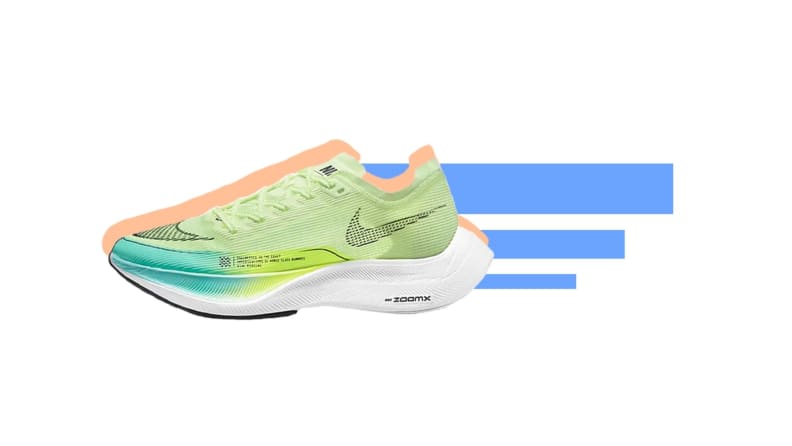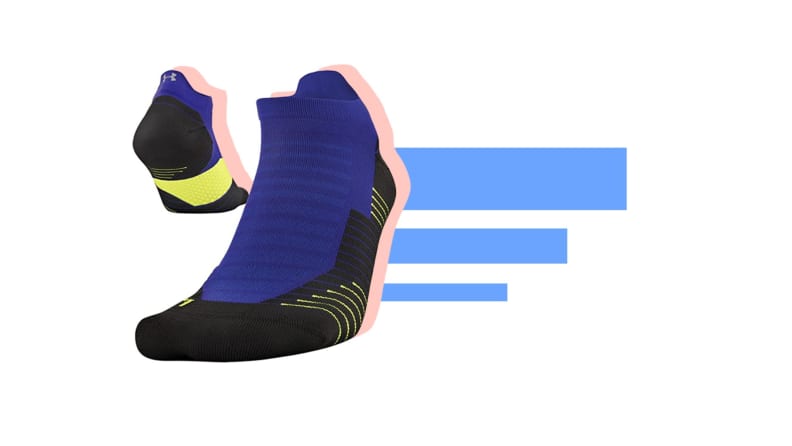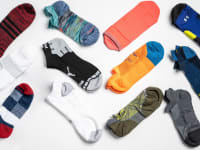How to pick the best running outfit for race day
We tapped two running coaches for tips on dressing success.
Products are chosen independently by our editors. Purchases made through our links may earn us a commission.
Whether you’re running your first race or your 500th, pre-race jitters are real. But while you can’t always control what happens on the course, you can prepare by picking the right race day outfit.
And when it comes to pre-race planning, who better to consult than a coach? We tapped two running experts—Kaitlin Goodman, a running coach and four-time Olympic trials qualifier based in the Pacific Northwest, and Jess Hofheimer, a running coach and marathoner in North Carolina—to walk us through every aspect of dressing for race day, from tank tops to trash bags (yes, trash bags).
What shoes should you wear for a race?

Choose shoes with about 50 to 100 miles on them, Goodman says.
The short answer: your favorite or lightest pair you trained in. The runner adage “nothing new on race day” holds fastest for your footwear, and comfort is the name of the game when it comes to pounding the pavement. This is especially true if you expect your pace will be faster than many of your training runs in order to come in under a certain goal time or to set a new personal record. Also, your race distance matters: You’ll want to opt for more cushion for longer distances, like a half or full marathon, and less bulk for shorter ones, like a 5K.
That said, if you don’t mind splurging and you have at least a couple of weeks for a break-in period, Goodman recommends investing in super shoes, i.e., carbon-fiber racing shoes optimized for speed. Styles include the Nike Vapor Fly and Brooks Hyperion Elite, although both specialty running shoes will cost you over $200. “I think it's really going to be worthwhile for your performance on race day and also for your recovery,” Goodman says of the buzzy shoes, which have seen pro runners smash several records.
If you plan to purchase a pair, try to do so “early in your training cycle,” as Goodman recommends, and use them for a handful of your workouts or quality sessions, putting in about 50 miles. These special shoes lose some of their spring with too many miles, so you don’t want to overdo it, but you also want to be sure the shoes fit well and don’t have any hot spots that might cause blisters when you’re gunning for the finish line.
Plan your outfit ahead of time
Before the big day, be sure to give your outfit a test run (or several) to ensure there’s no chafing or discomfort. If you’re having a tough time deciding between two outfit options for a longer distance race, Goodman recommends opting for whatever will keep you coolest. “If you're debating between capris and shorts, I would go shorts,” she says. “You might be cold for the first 5K, but then you're going to warm up and, in my experience, I'd rather be a little cold than overheating.” Regardless of which you choose, make sure your pants have enough pockets to carry your fuel for longer races.
Focus on the fabric and fit
Moisture-wicking fabrics are key, meaning you should look for natural wool, polyester, or another synthetic blend instead of cotton, which gets soggy quickly and takes forever to dry. And, as with your shoes, be sure you give anything new a test run or two. “Feel how the fabrics move on your body,” says Hofheimer. “Certain [clothing I own] I love when I'm just doing an easy run, but if I get really sweaty, the fabric gets heavier and it hangs on me differently.”
Tighter-fitting tops are also conducive to speed, even if you don’t want to sport skimpy spandex like the pros. “I wouldn't pick things that are going to move a ton on your body, because it could lead to chafing and irritations that might slow you down,” Hofheimer says.
Dress in layers
While your main race outfit will be carefully considered, if you’re running a longer race where you may be standing around in a corral for some time before you cross the starting line, you’ll want to top your ensemble with throwaway clothes. Pick up inexpensive sweats at a thrift store, says Hofheimer, so that you can toss them once you’re warmed up—as clothing items left on the sidelines are typically collected and donated. If a friend is coming with you to the starting line, you could instead pack a go-bag with several options and switch out, say, a short sleeve for a tank top based on how you’re feeling.
Have fun with your style
Especially if you’re running a big race like the Boston Marathon, Goodman recommends opting for bright-colored clothing so your friends and family can easily spot you among the crowd. But because your race day outfit is your “power suit,” as Hofheimer calls it, wear colors that “make you feel fast” and something “you feel the most like yourself in and [like you can] connect to your own inner strength and sense of joy.”
If your race is just for fun, go wild with your ensemble. Try a fun animal onesie or a hot pink Snuggie to “bring some fun to the start line” then ditch it before the gun goes off, says Goodman. Not only will it keep you warm, it could be a great conversation starter with other runners, too. And if speed isn’t your main goal, you can go for a style PR, so to speak, during the race itself. Bring some creativity into your outfit by adding tutus, costumes, and more. (Although, if time is your main goal, “less is more,” says Goodman.)
Personalized shirts can also bring personality into your outfit or pay tribute to someone you’re running the race or fundraising for. “I often will write the names of people that either have inspired me or if I'm running the race in memory of somebody on the back of my race bib as a little personal reminder,” adds Goodman, also noting that it’s a good idea to write your own name somewhere on the outside of your bib, so fans can cheer for you by name. After all, from start to finish, race day fashion is another way to show the world who you are. “Running apparel is another way of expressing yourself,” says Hofheimer.
How do you dress for a race in the rain or on a hot day?
For both rainy and sunny days, a cap with a bill on it provides protection. But if temperatures are high, Hofheimer recommends opting for a visor instead so that “the top of your head can breathe.” And when it comes to rainy races, don’t trash the trash bag method. To keep dry for as long as possible, bring some garbage bags to the start line, says Goodman, including trash bags to cover your shoes. You’ll still get soggy during the run itself, but at least you won’t start out that way.
What should you bring to a race?

Before you toe the starting line, keep your feet blister-free with quality socks.
While a finishers’ medal is the ultimate race day accessory, there are a few other items that can help you get there more smoothly. To avoid sweating the small stuff while you’re sweating on the course, plan in advance to find the right belt to hold your phone and fuel (if you don’t have pockets), sunglasses that won’t bounce on your head, and chafing solutions to prevent fabric and sweat from rubbing skin. Assuming the race has good aid stations, you probably don’t need to bring water unless you want to have your sips whenever you like. If you’re running any races while pregnant, consider buying a supportive belly band, which is “kind of like having a sports bra for your belly,” says Goodman, a new mom. Running socks are the “most important” accessory, and the coaches don’t recommend skimping on quality in that area.
Don’t fret if you’re not decked out in Lululemon from head to toe, however, as not all running accessories need to break the bank. For a disposable way to stay warm while you’re warming up, Hofheimer recommends cutting tube socks into makeshift arm sleeves that come off “really easily” while you’re running and can be dumped when you no longer need them.
The product experts at Reviewed have all your shopping needs covered. Follow Reviewed on Facebook, Twitter, Instagram, TikTok, or Flipboard for the latest deals, product reviews, and more.
Prices were accurate at the time this article was published but may change over time.


